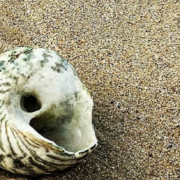Engineering a sand blast from the past
Last time I saw him was a little startling. Wes Anderson’s quirky The Grand Budapest Hotel had just finished, in the Village cinema, and his steady mellifluous voice came floating out of the blackness behind me.
“So, what did you think of that, Murphy?” he asked. Of course, there’s only ever one answer for Anderson movies. “Peculiar but terrific,” I muttered, or something to that effect.
The voice belonged to a one-time Country Road Boards engineer with a liking for tweed coats, English cars from the 1950s, pushbikes and just about everything about Geelong’s past.
He was a regular commentator/supporter on all sorts of articles I’d written about old stuff around Geelong.
One time he admonished me, gently, for writing a yarn about Geelong founding father Foster Fyans’ reputation as a sadistic flogging commandant at the Norfolk Island convict colony.
Another time he presented me with a print by colonial artist Wilbraham Liardet of Geelong’s waterfront and fledgling township in 1848. “Keep up the good work,” he told me. It’s on a wall in my living room.
Peter Alsop had a great love — and encyclopaedic knowledge — of engineering history, of bridges and tunnels, of hydraulics and floods and breakwaters, of architecture, heritage and music. He was a violinist with the Geelong Symphony and Geelong String orchestras, and several other ensembles.
Clever bloke all round. And a polite, engaging and encouraging bloke.
But I kind of lost track of Peter Alsop. For years, I’d simply run into him on the street. He was always about, and always up for a chat.
Then, one day, I realised he wasn’t around. He’d exited this world, quietly, without any great fanfare, a few months earlier, in late 2014. I’d missed it altogether.
I felt ashamed of myself. But Peter Alsop’s departure was the far greater shame.
Before he died, he was awarded a Master of Engineering degree by Deakin Uni. He didn’t last to its actual conferring, and there was a deep sadness to the extensive, and well-deserved, tribute later extended him by the uni’s former architecture head and deputy VC Daryl LeGrew.
More recently, I got wind that another friend of Peter Alsop was working on a novel inspired by this remarkable quiet achiever.
Like me, author Gregory Day tripped to Peter’s extraordinary knowledge in a casual kind of fashion. Peter was a regular visitor to the Barwon Booksellers store in the city’s James Street, where Greg works, and the pair connected on numerous streams of cerebral consciousness.
Day elaborates on these in the book, A Sand Archive, his latest in a series of award-winning novels in which he regularly draws on all manner of curious Otways coastal and hinterland life and nature – even a little of the paranormal.

Author Gregory Day. Picture: Simon O’Dwyer
The chief character, FB Herschell, is unmistakably Alsop. He’s working on the Great Ocean Road with the CRB and battling to find a fix for regular but unpredictable subsidence caused by the fact parts of the road are built on shifting sand dunes.
The young FB, anxious to study sand dunes and their properties, heads for France where he finds himself in the middle of the fevered 1968 Paris social demonstrations and riots, and falling in love. It’s a complex, magical, poetic and elegiac story.
Day’s sense of place is anchored in Geelong, the Great Ocean Road but especially in Aireys Inlet, or more traditionally Mangowak. He’s as remarkable, in his way, as Herschell or Alsop.
A poet, a musician, writer and environmentalist, his Patron Saint of Eels, The Grand Hotel, Archipelago of Souls, Ron McCoy’s Sea of Diamonds and other works have won him a string of literary awards.
His great mate, Lorne’s Greek fisherman-poet, the late Christos Raskatos, once told me with great affection that he was mad. Day’s own poetry is downright wicked.
It’s a terrible pity he’s not about to read it but I’m not quite sure what Peter Alsop would think, being held up to such attention, in Day’s latest novel. Given his self-effacing manner, I suspect he’d have been kind of mortified.
If it was me, I’d be bloody delighted.
— A SAND ARCHIVE, by Gregory Day, is published by Pan Macmillan/Picador.

